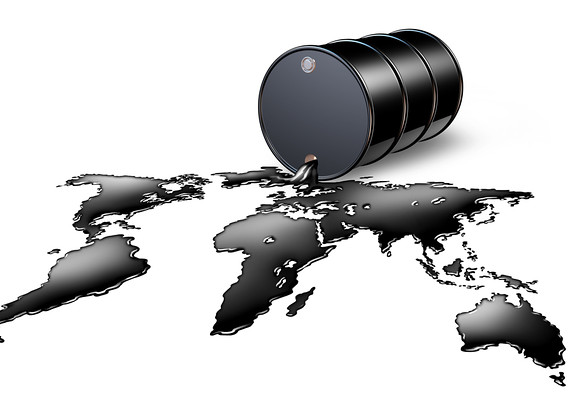*Kainji Hydro electricity generation capacity falls to 210MW
Oscarline Onwuemenyi
28 August, 2011, Sweetcrude, ABUJA – The Federal Government has stated that it is fully committed to the privatization or concessioning of some power stations across the country to ensure that they are more efficiently run in the quest to rapidly improve the nation’s power generation capacity.
The Minister of Power, Professor Bart Nnaji, who disclosed this over the weekend during an inspection visit to the Kainji Hydro Electric Power Plc, in Kainji, Niger State, stated that in the meantime, the Federal government would continue funding rehabilitation projects at the hydro station prior to their complete takeover by potential concessionaires.
He lamented that for decades since the station was built, many of the turbines have not been rehabilitated due to limited government funding, adding that only a viable and transparent concessioning of the station would ensure that the funds needed for statutory overhauling of the generating units are provided.
According to him, “The process of concessioning the Kainji Hydro power station and other power plants in the country is still on. The Bureau for Public Enterprises (BPE) has received expressions of interest for the power stations, and we hope to conclude the process and hand them over to successful concessionaires by early next year.”
He commended workers at the station for keeping the plant running in spite of the obvious challenges noting that the administration was ready to do everything to support them and ensure improved generation capacity for the benefit of all Nigerians.
The Minister noted that the Kainji Hydro Electric remains one of the sore points for government because of its inability to overhaul many of its generating units over the years leading to inefficiency and minimal performance.
He said, “The problem has always been the inadequacy of funding for such projects, in the face of various competing problems for funding. This has necessitated the efforts of government to concession the station and others to ensure regular statutory overhauling and maintenance required by such a plant to perform optimally.”
According to Nnaji, the intention of the administration is to ensure the full realization of the original installed capacity of 760MW, even as plans are on the way to install turbines in the open pits of the station to maximize the resources of the hydro power station.
“It will take years to do the installation of the new turbines, but the sooner we start the better for everyone. I have instructed the Chief Executive to work with Power Holding Company of Nigeria (PHCN) to come up with the costs of doing that (installing the turbines).
“Also, it will be really good to have an idea of what it will cost the government to do the entire rehabilitation and retrofitting, including replacing the transformer here,” he stated.
Nnaji pointed out that the station’s statutory role of black starting the grid during emergencies, controlling of system frequency to achieve grid stability and bulk power delivery will be performed satisfactorily if the generating units are fully rehabilitated.
He noted that, “The importance of having the plant here running at full capacity cannot be overemphasized, especially for the purpose of creating needed reserves to ensure that the system does not collapse whenever you experience problems.
“If at a particular station you lose traction, you can lose a lot due to system collapse. If we recover some of the capacity here, we might have reserves in Kainji for frequency control mechanism.”
Meanwhile, the Chief Executive Officer of Kainji Hydro Electric, Engr. R. O. Akinwunmi has disclosed that the current generating capacity of Kainji Hdro Electric is 210 megawatts as against the installed capacity of 760 megawatts.
He said, “I do not want to be pessimistic, but Kainji Station is in dire straits and requires urgent and coordinated attention to bring the station back to life. Apart from the unreliability of the generating units, the threat of flood as a result of leakages is a big challenge to the station.”
He noted that the out of eight generating units in the station, only unit 1G11 was completely overhauled in the year 2002. This same unit is overdue for another overhaul, adding that the lack of statutory overhaul makes the units susceptible to frequent breakdown.
Akinwunmi stressed that it is the experience and ingenuity of the staff that have kept the first set of generating units running till now, otherwise they would have been scrapped.
He explained that Nigeria, being a member of Niger Basin Authority, had afforded the country the opportunity to access World Bank loan for the rehabilitation of Kainji Generating Units and other power infrastructure.
According to him, “The rehabilitation is in phases, with phase one being the rehabilitation and retrofitting of three of the generating units 1G5 (120MW), 1G6 (120MW) and 1G12 (100MW) was signed by the Power Holding Company of Nigeria (PHCN) in June, 2011. The exercise will be completed in 42 months.
“The second phase comprises the rehabilitation of the first set of generating units, namely 1G7, 1G8, 1G9 and 1G10, which will start in earnest after the completion of Phase one of the contract.”
The Chief Executive of Kainji Hydro Electric appealed to the Federal government and whoever the station is concessioned to, to take the rehabilitation and retrofitting of the first set of generating units as a single contract thereby reducing the period the generating units will be brought back to service.
“Meanwhile, before this is achieved, the station will require improved funding as the present funding to keep the station running is grossly inadequate. Most of the spare parts are obsolete and are out of production line, thus making the production cost higher on request,” Akinwunmi added.




